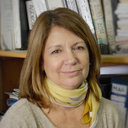Synthetic stigmasterol derivatives inhibit capillary tube formation, herpetic corneal neovascularization and tumor induced angiogenesis: Antiangiogenic stigmasterol derivatives.
Kulcsszavak
Absztrakt
Angiogenesis plays a critical role in initiating and promoting several diseases, such as cancer and herpetic stromal keratitis (HSK). Herein, we studied the inhibitory effect of two synthetic stigmasterol derivatives on capillary tube-like structures and on cell migration in human umbilical vein endothelial cells (HUVEC): (22S,23S)-22,23-dihydroxystigmast-4-en-3-one (compound 1) and (22S,23S)-3β-bromo-5α,22,23-trihydroxystigmastan-6-one (compound 2). We also studied their effect on VEGF expression in IL-6 stimulated macrophages and in LMM3 breast cancer cells. Furthermore, we investigated the antiangiogenic activity of the compounds on corneal neovascularization in the murine model of HSK and in an experimental model of tumor-induced angiogenesis in mice. Both compounds inhibited capillary tube-like formation, but only compound 1 restrained cell migration. Compound 1, unlike compound 2, was able to reduce VEGF expression. Only compound 1 not only reduced the incidence and severity of corneal neovascularization, when administered at the onset of HSK, but it also restrained the development of neovascular response induced by tumor cells in mice skin. Our results show that compound 1 inhibits angiogenesis in vitro and in vivo. Therefore, compound 1 would be a promising drug in the treatment of those diseases where angiogenesis represents one of the main pathogenic events.


